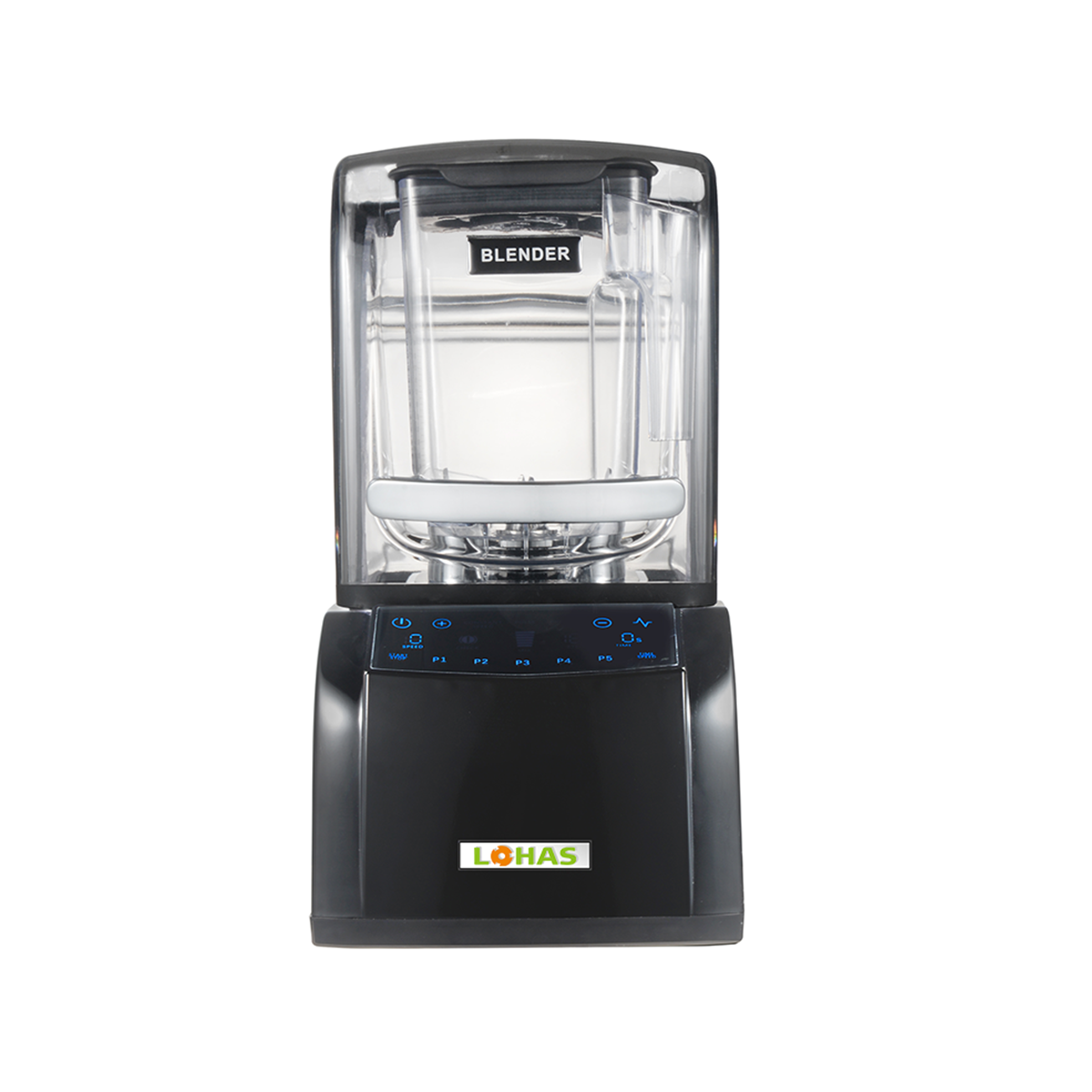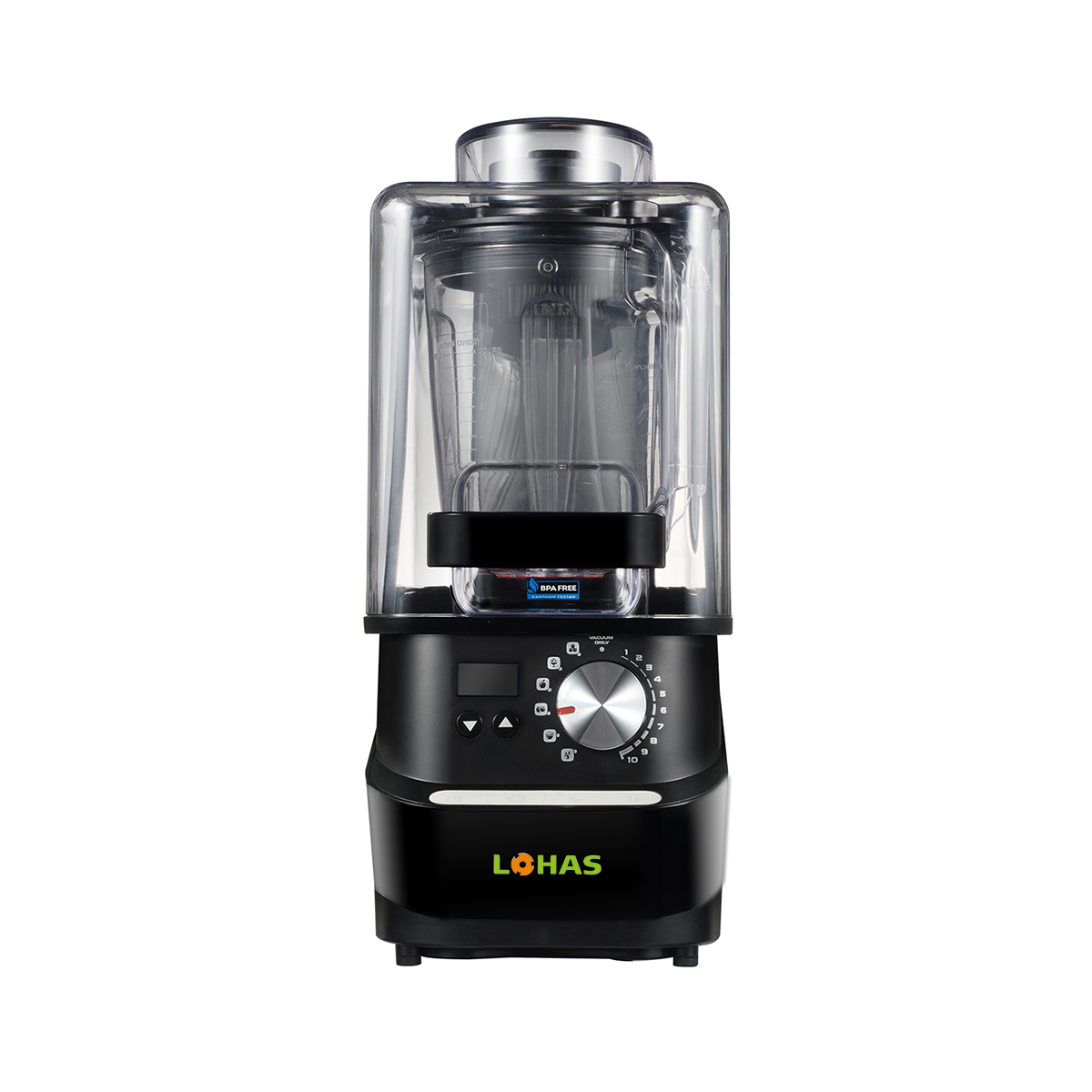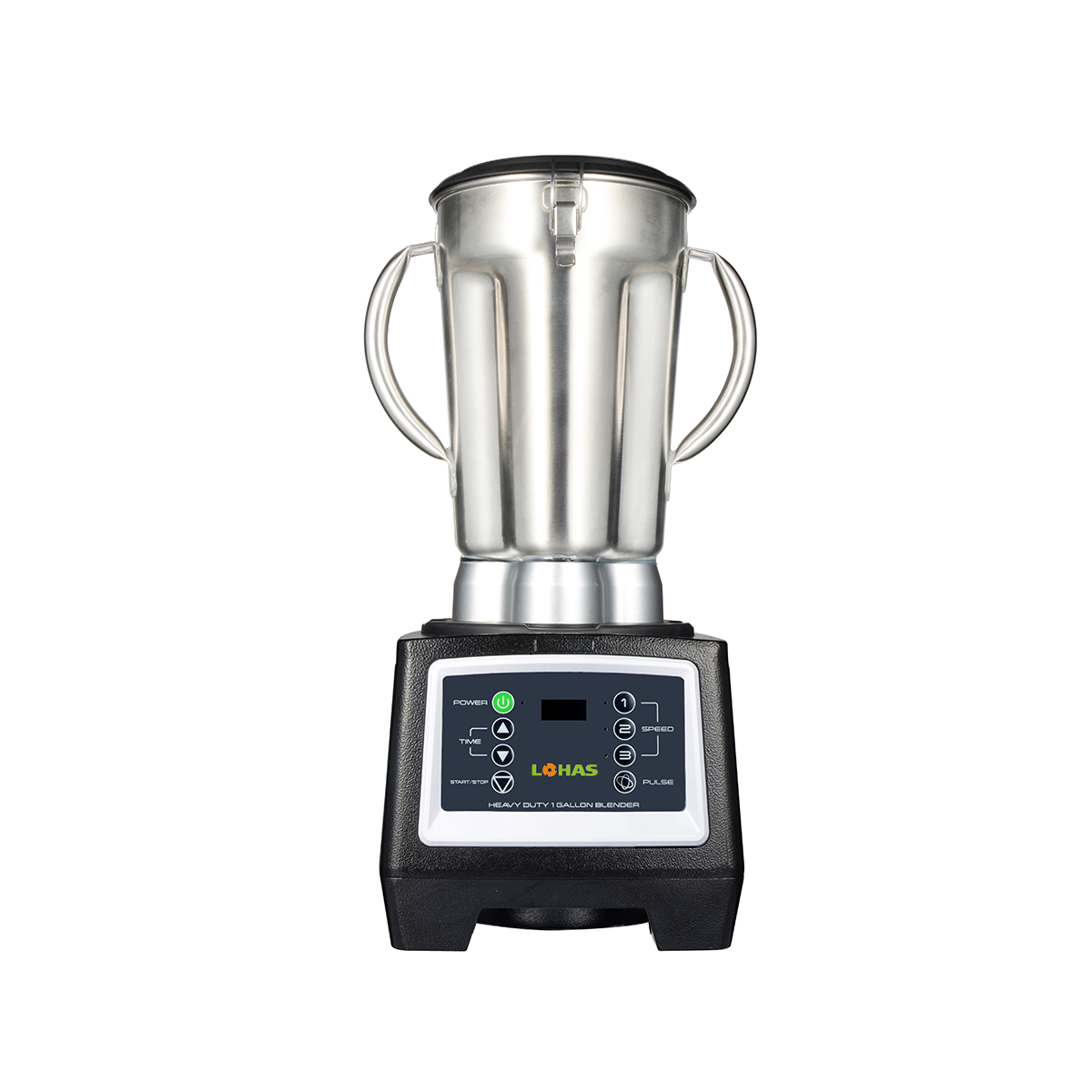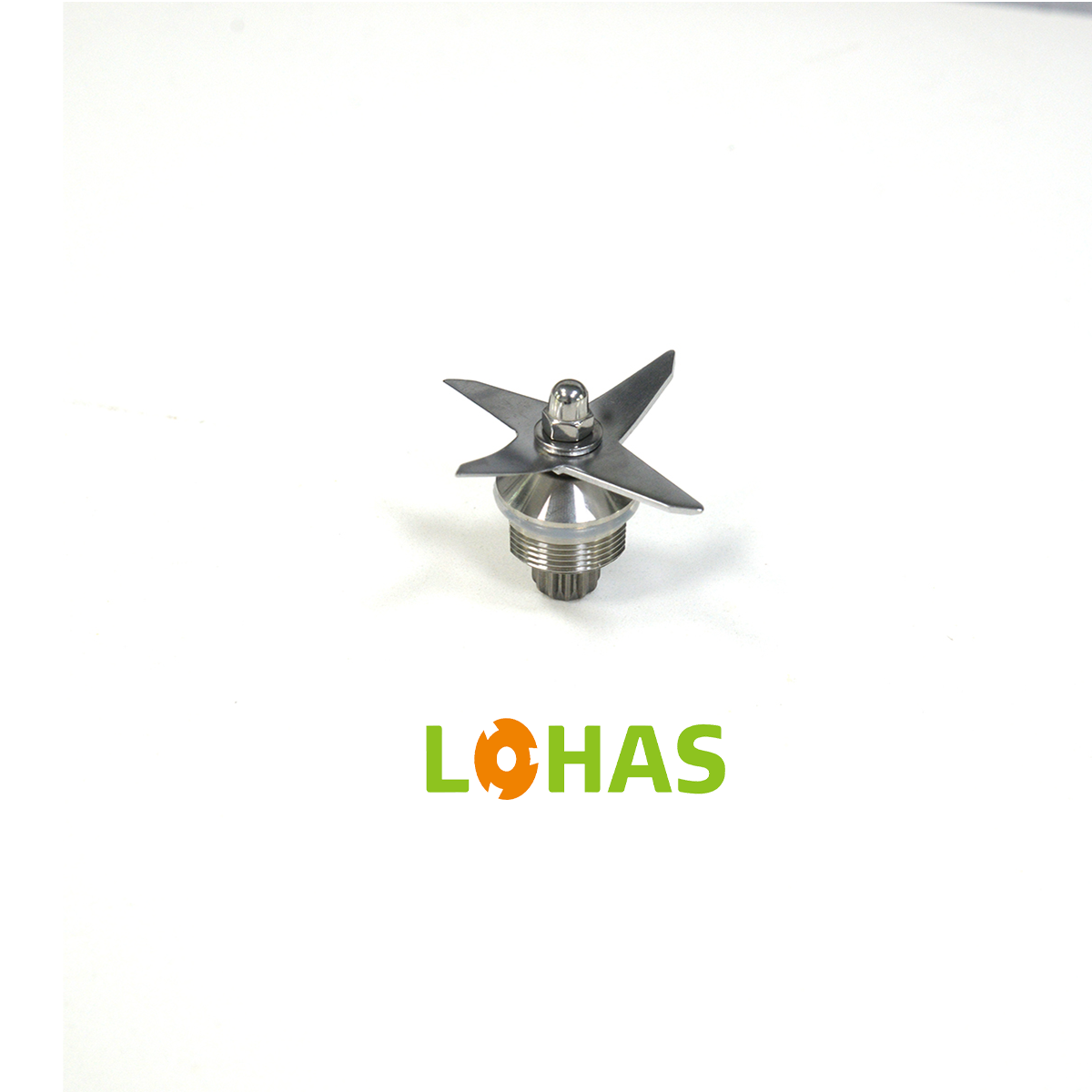ممارسات التنظيف الأساسية للخلاطات التجارية
تقنيات الشطف الفوري بعد الخلط
الصيانة السليمة لخلاط تجاري خلاط تبدأ فورًا بعد الاستخدام. يساعد الشطف الفوري بعد الخلط في منع تراكم البقايا، وبالتالي الحفاظ على النظافة وتحسين الكفاءة التشغيلية. ومن خلال شطف بقايا الجسيمات الكبيرة فورًا، يمكن تقليل وقت التنظيف لاحقًا وضمان أداء أفضل في الاستخدام التالي. توصية عملية هي استخدام الماء الدافئ مع منظف خفيف، بهدف إتمام دورة شطف مدتها دقيقتان مباشرة بعد الخلط. تشير الدراسات إلى أن الشطف الفوري يمكن أن يقلل من نمو البكتيريا بنسبة تصل إلى 80٪، مما يجعله خطوة حاسمة للحفاظ على بيئة معقمة في أي مطعم أو مقهى يستخدم خلاط سموذي تجاري ممتاز أو ماكينة سموذي تجارية.
تنظيف عميق لبقايا البروتين والعصائر
يُعد التنظيف العميق الأسبوعي لخلاطات المطاعم التجارية أمرًا ضروريًا، خاصة عند التعامل مع بقايا البروتين والعصير، وذلك لضمان كفاءة الأجهزة على المدى الطويل والوفاء بمعايير النظافة. تتضمن هذه العملية تفكيك أجزاء الخلاط للوصول إلى المناطق التي تتراكم فيها البقايا غالبًا. ويمكن للمواد المنظفة المتخصصة المصممة للتعامل مع بقع البروتين والعصير أن تحافظ على مستويات النظافة المطلوبة لخلاطات المطاعم. ويُشير الخبراء إلى أن اتباع جدول تنظيف عميق دقيق يمكن أن يمدّد عمر الخلاط بنسبة تصل إلى 20%. ويوفر هذا الاستثمار في الصيانة المنتظمة حماية لمكونات الخلاط، وهي عناصر بالغة الأهمية بالنسبة للأعمال التي تعتمد على آلات تحضير السموذي التجارية.
تعقيم الأسطح شديدة التلامس بشكل صحيح
إن التعقيم المستمر للأسطح التي تتعرض للمس بكثرة في الخلاطات التجارية، مثل الأزرار والأيدي، أمر بالغ الأهمية للحفاظ على بيئة صحية. يُوصى باستخدام معقمات آمنة للاستخدام الغذائي على هذه المناطق بشكل متكرر، للتأكد من تنظيف أي أسطح ملوثة بشكل كامل. بالإضافة إلى ذلك، يجب تطبيق تقنيات تجفيف مناسبة لمنع نمو العفن والبكتيريا بعد التعقيم. تؤكد المنظمات الصحية أن الالتزام بإجراءات تعقيم صارمة يمكن أن يقلل من خطر الأمراض المنقولة عبر الغذاء، وهو أمر بالغ الأهمية في أي بيئة تجارية تستخدم خلاط عصير تجاري. ومن خلال دمج هذه الممارسات في العمليات اليومية، يمكن للشركات حماية عملائها وموظفيها على حد سواء.
استراتيجيات حماية المحركات للاستخدام الشاق
فهم دورات العمل لأجهزة تحضير العصائر
تُعد دورات العمل عاملاً حاسماً لفهم وحماية محركات ماكينات العصائر التجارية، خاصة بالنسبة لأفضل خلاط عصائر تجاري. يوصي المصنعون بدورة عمل بنسبة 50٪ لتحقيق التوازن بين الأداء ومنع إجهاد المحرك. على سبيل المثال، فإن تشغيل الخلاط بشكل مستمر لمدة 30 دقيقة سيتطلب فترة تبريد لمدة 30 دقيقة. يمكن أن يؤدي الاستخدام المكثف دون احترام هذه الدورات إلى ارتفاع درجة حرارة المحرك، مما يؤدي إلى تعطله مع مرور الوقت. ولتجنب هذه المشكلات، ينبغي للمستخدمين الرجوع إلى إرشادات الشركة المصنعة بشأن أوقات الاستخدام المثلى. ويضمن الالتزام بذلك عمرًا أطول لماكينات العصائر التجارية، مما يُحسّن من استثمارك في حل موثوق لتحضير العصائر.
الوقاية من ارتفاع درجة الحرارة أثناء التشغيل المستمر
من الضروري منع ارتفاع درجة الحرارة في "ماكينات العصائر التجارية" خلال ساعات الذروة التشغيلية لضمان إطالة عمر المحرك. يمكن أن يُعد تطبيق فترة تبريد بعد الاستخدام المستمر استراتيجية فعّالة لمكافحة ارتفاع الحرارة. وسوف يساعد ضمان تهوية كافية حول الخلاطات في الحفاظ على الكفاءة التشغيلية. وتشير الأبحاث إلى أن ارتفاع درجة الحرارة قد يقلل عمر المحرك بنسبة تزيد عن 30٪، مما يبرز أهمية هذه الممارسات. ومن خلال دمج استراتيجيات التبريد، يمكن للشركات منع توقف العمل وإطالة عمر ماكينات العصائر، مما يضمن إنتاجية مستمرة في البيئات المطعمية.
فحص ثبات الجهد الكهربائي للمطابخ التجارية
تُعد الفحوصات الدورية للجهد الكهربائي ضرورية لمنع تلف خلاطات المطاعم الناتج عن التقلبات. ويضمن إجراء هذه الفحوصات باستخدام جهاز قياس متعدد أن تظل مصادر الطاقة مستقرة، وهو ما يُعد أمراً بالغ الأهمية لتشغيل وحدات "ماكينة العصائر التجارية" بسلاسة. ويساعد تزويد الجهد بشكل ثابت في الحفاظ على عمر المحرك الطويل والكفاءة التشغيلية. وتؤكد معايير السلامة الكهربائية على أهمية المراقبة المنتظمة للجهد، بما يتماشى مع أفضل الممارسات لحماية معدات المطابخ التجارية. ومن خلال الالتزام بهذه التوصيات، يمكن لمتعاملي المطابخ حماية أجهزتهم، وضمان الأداء الأمثل لها، وتقليل احتمالية حدوث إصلاحات مكلفة.
صيانة الشفرات لأداء عالي المستوى تجاريًا
جداول شحذ شفرات خلاطات المطاعم
للحفاظ على كفاءة الخلط المثلى لجهاز تحضير العصائر التجارية الخاص بك، فإن إنشاء جدول دوري لشحذ الشفرات أمر بالغ الأهمية. وعادةً ما يوصي مصنعو الشفرات بشحذها كل شهرين للحفاظ على أداء الخلاط في أفضل حالاته. توجد طرق مختلفة لشحذ الشفرات، مثل التلميع والطحن. ويُعد التلميع أكثر ملاءمة لتحسين الحافة بشكل طفيف ولأغراض الصيانة، في حين أن الطحن يعالج مشكلات الكسْر الأكثر أهمية. ويعتمد الاختيار على نوع الشفرة وحالتها. وتكفل المتابعة الدورية وفقًا لإرشادات المصنّعين هذه بقاء خلاطك أداة قيمة في مطبخك، وتقلل من فترات التوقف وتحافظ على الأداء العالي.
كسر الثلج دون الإضرار بالشفرات
كسر الثلج وظيفة أساسية للعديد من عصارات الأعمال التجارية الخلاطات ولكن يمكن أن تؤدي التقنيات غير السليمة إلى تلف الشفرات. ولحماية شفراتك، يُنصح باتباع أفضل الممارسات مثل تجنب تحميل الخلاط بشكل مفرط واستخدام إعدادات النبض، والتي تساعد في إدارة عبء العمل بشكل أكثر فعالية. كما تلعب مادة الشفرة دورًا حيويًا؛ إذ يُوصى غالبًا بالاستنلس ستيل المتين لمقاومته العالية للتآكل الناتج عن المواد الصلبة مثل الجليد. وفقًا لملاحظات المستهلكين، فإن الالتزام بأساليب سحق الجليد الصحيحة يمكن أن يطيل عمر الشفرة بشكل كبير، ويضمن أداءً متفوقًا مستمرًا في عمليات تشغيل جهاز تحضير العصائر التجارية.
الكشف عن أنماط التآكل في شفرات الفولاذ المقاوم للصدأ
يُعد الفحص الدوري لشفرات الخلاط التجاري للسموذي أمرًا بالغ الأهمية لاكتشاف أنماط التآكل التي قد تشير إلى الحاجة إلى إعادة الشحذ أو الاستبدال. يجب على المستخدمين فحص الشفرات بصريًا بحثًا عن أي علامات تآكل، مثل الحواف المتكسرة أو البالية، والتي يمكن أن تقلل كفاءة الخلط بشكل كبير. ويُعد الصيانة استنادًا إلى اكتشاف مبكر للتآكل أمرًا حيويًا، إذ تشير التقارير إلى أن الشفرات البالية قد تقلل أداء الخلط بنسبة تصل إلى 25%. وتطبيق ممارسات شحذ في الوقت المناسب بناءً على أنماط التآكل الملاحظة يضمن جودة خلط مستدامة ويحمي استثمارك في معدات المطبخ التجارية.
منع تدهور الختم في النماذج عالية السرعة
فحوصات شهرية للواحات ضد التسرب
إن تطبيق روتين فحص شهري لختم الخلاط الخاص بك أمر بالغ الأهمية لمنع التسرب الذي قد يعطل العمليات. مع مرور الوقت، يمكن أن تتآكل الخوا seals أو تتلف، مما يؤدي إلى احتمال حدوث تسرب وانخفاض الكفاءة. يمكن أن تساعد الفحوصات الدورية في اكتشاف هذه المشكلات مبكرًا، وتقليل خطر الإصلاحات المكلفة وزيادة عمر الخلاط الافتراضي. تشير تقارير الصناعة إلى أن إهمال صيانة الختم يمكن أن يزيد بشكل كبير من تكاليف التشغيل، مما يبرز أهمية الانتظام في هذه الفحوصات لحماية استثمارك.
إعادة التجميع السليم بعد التنظيف
يُعد تعليم المستخدمين تقنيات التجميع الصحيحة بعد التنظيف أمرًا بالغ الأهمية للحفاظ على سلامة أختام الخلاطات ومنع تدهورها. إن اتباع إرشادات الشركة المصنعة أثناء إعادة التجميع يضمن تركيب كل مكون بدقة، مما يقلل من احتمالية فشل الأختام. ويعزى سبب نسبة كبيرة من حالات فشل الأختام إلى عملية إعادة التجميع غير السليمة، مما يبرز أهمية الالتزام بالتقنيات الموصوفة. وتُظهر الإحصائيات أن هذه الأخطاء يمكن الوقاية منها من خلال التدريب الدقيق والانتباه للتفاصيل أثناء إجراءات الصيانة.
تطبيقات المزلقات الصالحة للأغذية
من الضروري استخدام مواد تشحيم آمنة للغذاء للحفاظ على سلامة الأختام ومنع تدهورها في نماذج الخلاطات عالية السرعة. تضمن هذه المواد التشحيمية المتخصصة بقاء الأختام مرنة وفعالة، مما يقلل من التآكل الناتج عن الاستخدام المتكرر. وتشمل المواد التشحيمية الموصى بها خيارات مصنوعة من زيت معدني، والمعروفة بفعاليتها وسلامتها في بيئات إعداد الطعام. يمكن أن يؤدي التطبيق المنتظم لهذه المواد التشحيمية، وفقًا للتوجيهات القياسية في الصناعة، إلى تحسين عمر الخلاطات وأدائها، مما يضمن تشغيلها بسلاسة وكفاءة.
تحسين تخزين المطابخ التجارية
متطلبات التهوية لقواعد المحركات
إن الحفاظ على درجة حرارة المحرك من خلال التهوية المناسبة أمر ضروري في المطابخ التجارية لمنع ارتفاع درجة الحرارة. فيما يلي خطوات التهوية الفعّالة:
- تحديد احتياجات التهوية: تأكد من وجود تدفق هواء كافٍ حول قواعد المحركات من خلال التحقق من مواصفات التهوية الخاصة بجهاز العصائر التجارية الخاص بك.
- ترتيبات تدفق الهواء الفعالة: فكّر في وضع الخلاط في منطقة تتسم بتدفق هواء طبيعي أو قم بتركيب مراوح عادمة للحفاظ على تهوية جيدة.
- التأثير على عمر المعدات: وفقًا للدراسات المتعلقة بأنظمة التكييف والتهوية، يمكن أن يؤدي التهوية الكافية إلى تحسين عمر المعدات بشكل كبير من خلال تقليل العبء الواقع على المحركات الناتج عن ارتفاع درجة الحرارة.
من خلال إعطاء الأولوية للتهوية، يمكن لمشغلي المطابخ حماية استثماراتهم في خلاطات المطاعم وتحسين عمر هذه الأجهزة الحيوية.
التحكم في الرطوبة في البيئات الرطبة
يُعد التحكم في الرطوبة أمرًا بالغ الأهمية في مناطق التخزين التي تحتفظ بالأجهزة الكهربائية مثل الخلاطات. فيما يلي كيفية إدارة الرطوبة بفعالية:
- إدارة الرطوبة: استخدم مواد تمتص الرطوبة مثل أكياس السيليكا جيل لمكافحة مستويات الرطوبة العالية.
- استخدام أجهزة إزالة الرطوبة: فكّر في تركيب أجهزة إزالة الرطوبة داخل مناطق التخزين لتقليل مستويات الرطوبة بشكل فعّال.
- إحصائيات التأثير: تُظهر الأبحاث أن الأجهزة الكهربائية التي لا تُحمى من الرطوبة يمكن أن تتعرض للتدهور، مما يؤدي إلى انخفاض الأداء مع مرور الوقت.
يُعد تطبيق استراتيجيات التحكم في الرطوبة أمرًا ضروريًا لضمان ظروف تخزين مثالية لخلاط العصير التجاري الخاص بك، ويحميه من التلف البيئي والتكاليف المرتبطة بالإصلاحات.
تكوينات التكديس الآمنة للوحدات المتعددة
يُعد تكديس الخلاطات بشكل آمن أمرًا بالغ الأهمية لتجنب الانقلاب أو إتلاف الوحدات. فيما يلي أفضل الممارسات للحفاظ على سلامة المعدات:
- توزيع الحمولة: تأكد من تكديس متوازن من خلال توزيع الوزن بالتساوي على قاعدة كل وحدة.
- التكوينات الموجهة: اتبع إرشادات الشركة المصنعة للتكديس الآمن، كما هو موصى به لنماذج الخلاطات مثل جهاز تحضير السموذي التجاري.
- ممارسات التخزين المفيدة: يُساهم التكديس الصحيح في الحفاظ على سلامة المعدات وسلامتها أثناء التشغيل.
إن الالتزام بهذه الممارسات المثلى في تكوينات التكديس سيحمي استثمارك في خلاطات العصائر التجارية مع تعزيز التخزين والاسترجاع بكفاءة في البيئات المطبخية المزدحمة.
لمزيد من الرؤى، اكتشف أفضل خلاطة عصائر تجارية بتصميم مُحسّن للكديس الآمن.







